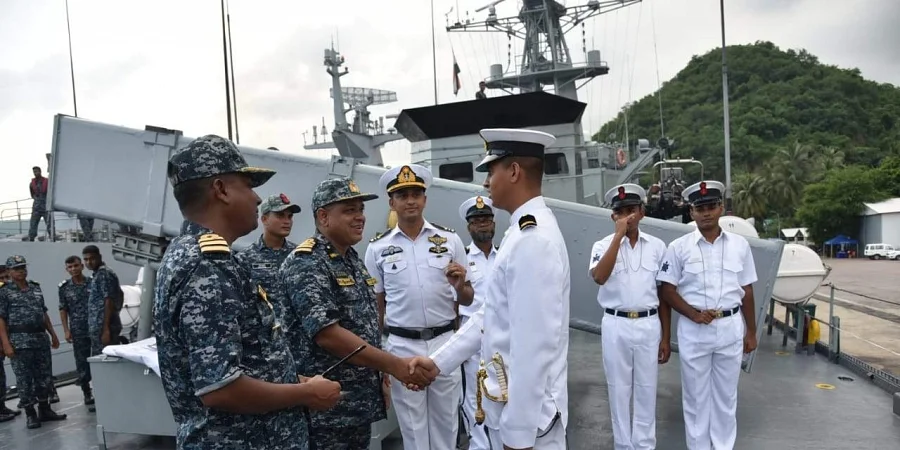India and Bangladesh have had a symbiotic relationship which has stood the test of time. A relationship which began as a mere battle-field assistance against a common enemy has aged like a fine wine over a period of 50 years. However, during the course of fifty years, the bureaucratic relations and political ties have not been hunky-dory all along, owing to the different governments coming in power in both the countries. The momentum which was consequently established post Bangladesh’s liberation, hit a roadblock as the Pakistan-migrated leaders who helmed the chair in Bangladesh had opposing views against the security concerns voiced by India. It was only in 2009 when Sheikh Hasina helmed the Prime Ministerial chair that things finally cruised in quest for a resolve. As a result, numerous military exercises surfaced and a bilateral defence cooperation agreement was ratified in 2017 in furtherance of mutual improvement in various economic, social, defence, scientific and technological prospects.
Developments in Naval Relations and Maritime
India and Bangladesh share a rather warmer and professional relationship including but not limited to politics and bureaucracy. With significant developments in the recent past, primarily Bangladesh emerging as the victor in the 2014 maritime boundary dispute against India, the naval relations have grown manifold. Furthermore, bilateral cooperation has also surfaced the issue of maritime trade. As a larger section of the Bay of Bengal was awarded to Bangladesh at the courteousy of UN Nations Tribunal, a stringent surveillance on narcotics smuggling, missing boats, human trafficking and organized crimes was also highlighted and mutually agreed upon.
At present, as China aims to seep through the porous borders of the Indian Ocean, it is critical for both the countries to cement their naval relations. It is in this regard that India was graced by the Bangladesh Navy Chief Admiral M Shaheen Iqbal in October 2021 to highlight the significant alliance of the respective naval agencies and reflect the same on the global spectrum. Furthermore, Pakistan and Taliban-governed Afghanistan have also increased significant concerns with respect to territorial security. India now faces a potential threat of a tripartite war and so does Bangladesh. Therefore, as India extends close to 30 percent of its total global developmental assistance to Bangladesh, it is likely that in the event of any training program and militaria developments, Bangladesh would be an integral participant.
Training Exercises and Naval Programs
Many joint training and exercises have been executed between the two countries. The sheer confidence between the two countries which dictates the exchange of military strategies, courtship games, maintenance of military equipment and even treatment for military personnel/their families, further cements the bilateral relations.
‘Bongosagar’ is the primary event of Bilateral Exercise between Indian Navy and Bangladesh Navy. The first edition of the exercise was held in 2019. The exercise aims to develop interoperability and joint operational skills through conducting a wide spectrum of maritime events. The exercise is likely followed by IN-BN Coordinated Patrol (CORPAT), wherein IN (India) and BN (Bangladesh) units undertake joint patrolling along the International Maritime Boundary Line. In the year 2020, second edition of Bongosagar was conducted in October 2020, marking the significance of 100th birth anniversary of Bangabandhu Sheikh Mujibur Rahman. The exercise cherished the ships from both navies participated in surface warfare drills, seamanship evolutions and helicopter operations. The exercise was immediately followed by the third edition of IN-BN CORPAT in Northern Bay of Bengal. The exercise included the famed combat ships namely – INS Kiltan (Anti-Submarine Warfare Corvette), INS Khukri (Guided-Missile Corvette), BNS Abu Bakr (Guided-Missile Frigate) and BNS Prottoy (Guided-Missile Corvette). The exercise was also blanketed by the Maritime Patrol Aircrafts from both navies. The exercises have exceedingly strengthened understanding between both the Navies and instituted measures to stop the execution of unlawful amenities.
Conclusion
India and Bangladesh have a tight, close and long-standing relationship incorporating a wide spectrum of activities and interactions. Sharing a common wall of porous borders, it is imperative that both these countries stick and work in coalition. However, there are a few concerning points which appear to be sedimenting a major roadblock in an otherwise smooth relationship. A relatively new theoretical perspective has caught grave eye-stares in India. India, though, is whole-heartedly engaging in training exercises and programs but is also viewing its relationship with Bangladesh through a Chinese-Prism. With the reiterations and revists of the Liberation War losing its captivating charm and Bangladesh buying two heavy-loaded armed submarines from China in 2013 resulting in strengthened Sino-Bangladesh relations, it is dubious whether the ties of India with Bangladesh would continue to remain as tight as it appears today.

